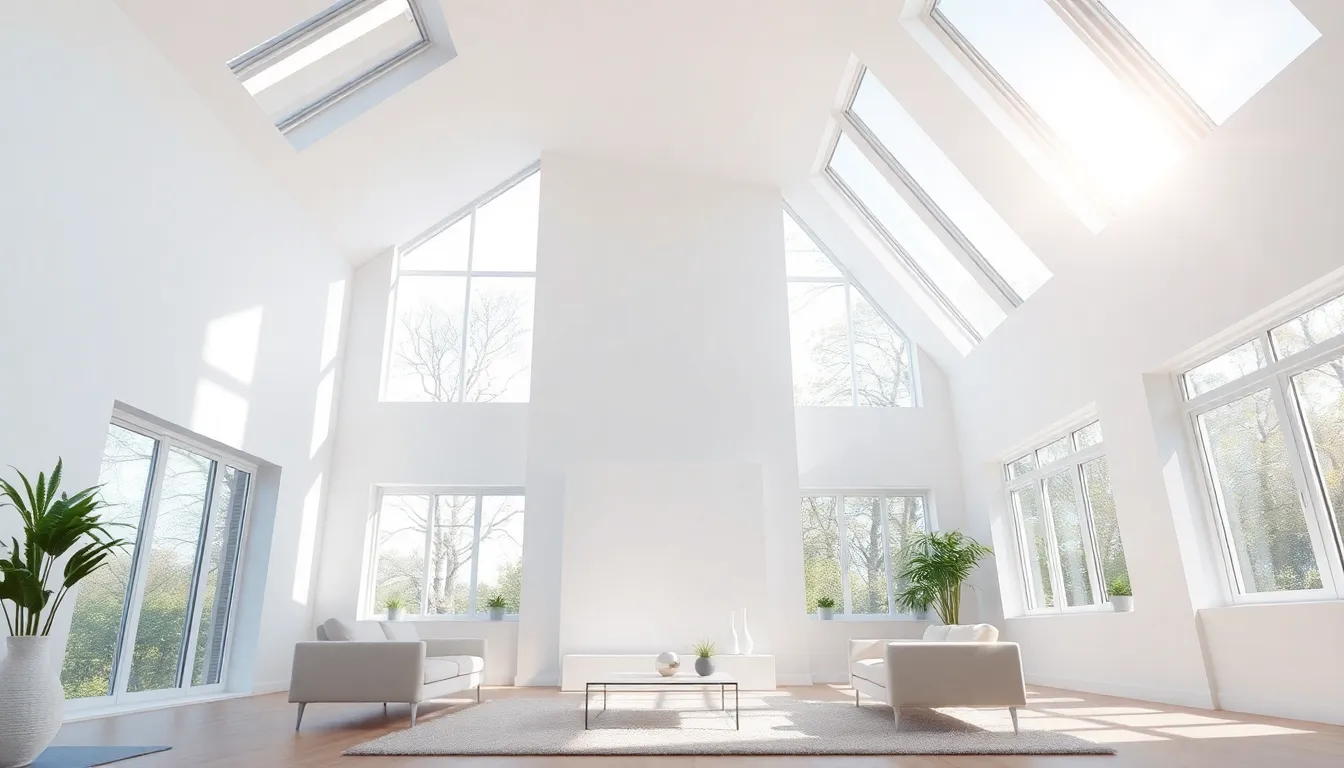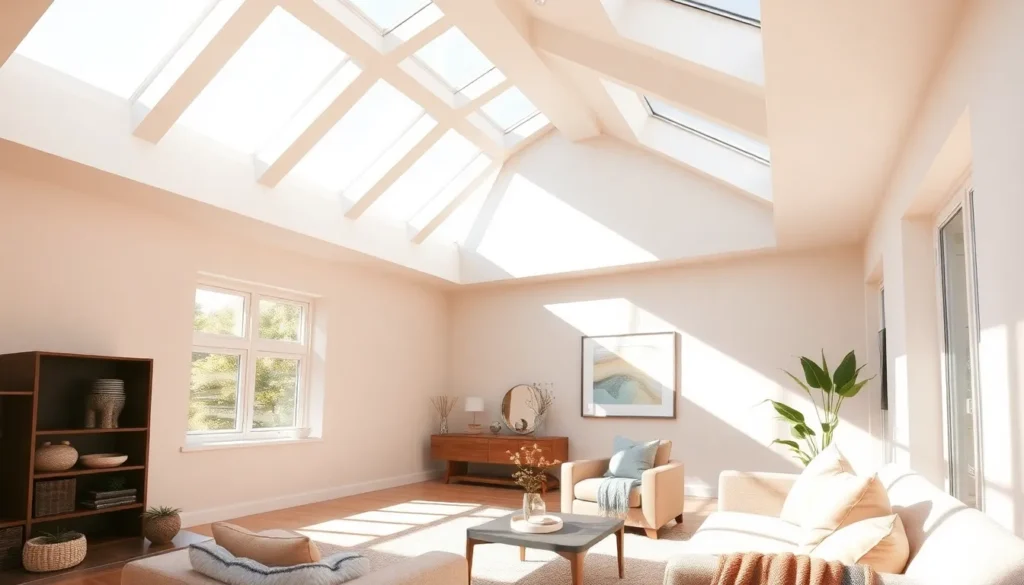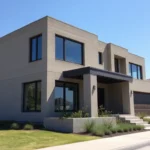Imagine a room bathed in natural light, where the sun’s rays dance across the walls, creating a warm and inviting atmosphere. That’s the magic of clerestory windows. These architectural gems sit high on walls, allowing light to flood in while maintaining privacy. They’re like the secret VIP section of your home, giving you all the benefits of sunlight without the nosy neighbors peeking in.
Clerestory windows aren’t just about aesthetics; they’re a smart choice for energy efficiency too. By harnessing daylight, they reduce the need for artificial lighting, which means lower energy bills and a happier planet. Whether in a cozy living room or a grand cathedral, clerestory windows elevate any space, making it feel open and airy. So, let’s dive into the world of clerestory windows and discover how they can transform your home into a radiant haven.
Overview of Clerestory Windows
Clerestory windows sit high on walls, allowing sunlight to stream into a space. Builders designed these features to illuminate areas typically difficult to brighten. These windows work well in both residential and commercial buildings, significantly enhancing visual appeal.
Natural light flooded through clerestory windows contributes to a vibrant atmosphere. Many architects favor these windows for their ability to maintain privacy while adding aesthetic value. Structures with clerestory windows often enjoy energy efficiency, reducing reliance on artificial lighting. Lower energy bills appeal to homeowners seeking cost-effective solutions.
Positioning clerestory windows strategically can transform the ambiance of any room. For instance, placing them above a central living area maximizes daylight exposure. Creative designs integrate clerestory windows with vaulted ceilings, creating a dramatic effect.
Materials used in clerestory windows vary, from traditional wood frames to modern aluminum. Design versatility allows for various styles, accommodating diverse architectural designs. Homeowners can select glass options that enhance thermal performance while maintaining clarity.
Incorporating clerestory windows into the design plan leads to various benefits, making them a popular choice among architects and designers. Their capacity to increase daylight while preserving privacy elevates spaces, transforming dull rooms into bright, inviting environments.
Benefits of Clerestory Windows

Clerestory windows offer multiple advantages that elevate both the functionality and aesthetics of a space.
Natural Light
Natural light floods into rooms thanks to clerestory windows. High positioning allows for sunlight entry without compromising privacy. Rooms benefit from an inviting brightness that reduces the need for artificial lighting. This light boosts mood and enhances productivity, as studies indicate natural light improves daily performance. Besides, strategic placement can accentuate architectural details, creating visually stunning effects. Spaces that lack adequate window access particularly gain from this light solution.
Ventilation
Ventilation stands as another key benefit of clerestory windows. This design feature encourages airflow, promoting a comfortable indoor environment. Higher placement allows hot air to escape naturally, helping cooler air circulate through lower openings. Enhanced ventilation reduces reliance on air conditioning systems, which leads to lower energy costs. Additionally, improved air quality creates healthier living spaces. Architects often incorporate these windows to maximize both airflow and comfort. Whether in homes or commercial buildings, proper ventilation is vital for occupant well-being.
Design Considerations
Designing with clerestory windows involves carefully considering architectural styles and their placement. These factors greatly influence the overall effectiveness and aesthetic appeal of the windows.
Architectural Styles
Clerestory windows adapt seamlessly to various architectural styles. Contemporary designs often incorporate large glass panels to enhance transparency. Traditional styles, like Colonial or Craftsman, frequently feature smaller, multi-pane designs that maintain historical integrity. Each style benefits from clerestory windows by improving natural light while preserving privacy. As a result, they enhance the structure’s character and ambiance.
Placement and Orientation
Placement and orientation play vital roles in maximizing clerestory window benefits. High positioning along walls allows sunlight to enter without sacrificing wall space. Optimal orientation toward the south or southwest can capture the most daylight throughout the day. This strategic alignment not only brightens interiors but also reduces glare. Properly placed clerestory windows improve room ventilation, promoting air circulation and comfort. For best results, integrate these windows with surrounding architectural elements and other openings.
Materials Used in Clerestory Windows
Clerestory windows utilize a variety of materials that enhance their functionality and aesthetic appeal. Understanding these materials aids in selecting the right options for specific needs.
Glass Types
Glass types play a critical role in clerestory windows’ performance. Low-emissivity (Low-E) glass actively reflects heat while allowing natural light to penetrate indoors. Tempered glass offers enhanced safety and resistance to breakage, making it ideal for higher elevations. Laminated glass combines strength with noise reduction, providing a quieter indoor environment. Tinted glass reduces glare and improves thermal efficiency by limiting solar heat gain.
Frame Materials
Frame materials contribute to the overall durability and style of clerestory windows. Wood frames provide a warm, classic look and insulation benefits, making them an attractive choice for traditional designs. Aluminum frames deliver a modern, sleek appearance and durability, often requiring less maintenance. Vinyl frames offer excellent thermal performance and affordability, appealing for budget-conscious projects. Fiberglass frames combine strength with energy efficiency, making them suitable for various architectural styles.
Maintenance of Clerestory Windows
Maintaining clerestory windows ensures they remain functional and aesthetically pleasing. Regular inspections play a key role in identifying wear, damage, or leaks. It’s crucial to check seals and frames for signs of deterioration since minor issues can escalate if not addressed promptly.
Cleaning the glass surfaces is essential for maximizing sunlight penetration. Safe solutions typically include warm water and mild soap. Regularly cleaning prevents dirt accumulation, which can diminish the window’s effectiveness over time.
Inspecting the window mechanisms is equally important. Functionality of operable windows can deteriorate due to lack of maintenance. Lubricating hinges and latches keeps them working smoothly, facilitating easy operation.
Structural integrity must also be monitored. The window frames, whether wood, aluminum, or vinyl, require periodic checks for rot, rust, or warping. Addressing these issues prolongs the lifespan and prevents costly repairs.
Consideration of the surrounding areas enhances maintenance outcomes. Overhanging trees or plants can obstruct light. Pruning back foliage annually uncovers the windows, allowing maximum light entry.
Replacement of damaged panes or seals may be needed to restore efficiency. Utilizing high-performance glass ensures energy efficiency and durability over time. Engaging qualified professionals for these repairs guarantees structural integrity and safety.
Scheduling maintenance at least once a year creates an effective routine. This proactive approach safeguards against larger issues while maintaining the visual and functional appeal of clerestory windows.
Clerestory windows stand out as a remarkable solution for enhancing natural light and improving the ambiance of any space. Their unique positioning not only preserves privacy but also contributes to energy efficiency and ventilation. With various materials and designs available, these windows can seamlessly integrate into different architectural styles.
Regular maintenance ensures that clerestory windows remain both functional and visually appealing. By embracing these architectural features, homeowners and builders can transform ordinary spaces into bright and inviting environments. The benefits of clerestory windows extend beyond aesthetics, positively impacting mood and productivity.













